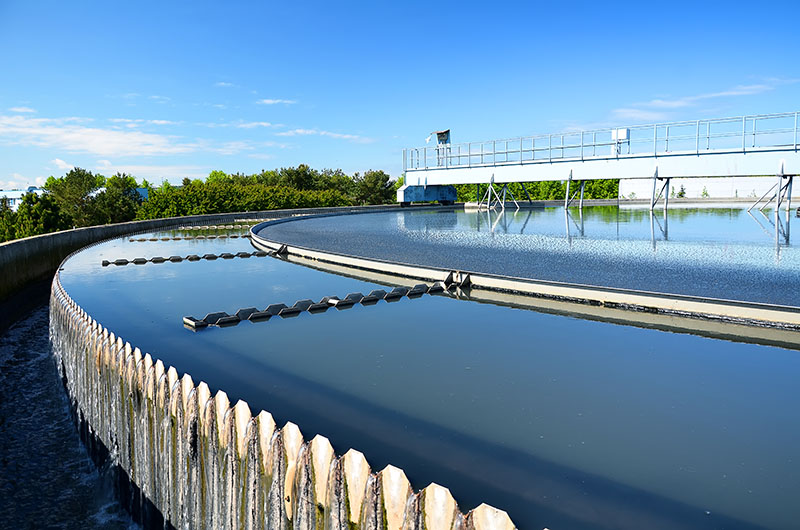Comprehending Wastewater Treatment Processes and Their Environmental Effect
The details of wastewater treatment procedures play a crucial role in mitigating environmental challenges associated with water contamination. Each stage, from initial to sophisticated treatments, is developed to address particular impurities, eventually guarding both public health and wellness and marine ecosystems.
Summary of Wastewater Treatment
How is wastewater transformed right into a safe resource for the setting? Wastewater therapy is a vital procedure designed to get rid of impurities from used water, thereby securing public health and wellness and securing environments. This process begins with the collection of wastewater from domestic, commercial, and business sources, which is after that directed to therapy facilities.
At these centers, numerous physical, chemical, and biological methods are utilized to treat the wastewater. First testing removes large debris, adhered to by sedimentation to different heavier solids. Subsequently, biological therapies, such as triggered sludge processes, make use of bacteria to break down raw material. These techniques not just decrease contaminant degrees yet additionally help with the healing of useful nutrients.
The dealt with effluent can be safely released right into natural water bodies or reused for watering and commercial objectives, promoting source preservation. Additionally, the treatment procedure generates biosolids, which can be repurposed as plant foods or soil amendments, better improving sustainability.
Phases of Treatment Procedures
The wastewater therapy procedure typically is composed of three key phases: preliminary, primary, and additional therapy. Each stage offers an unique duty in decreasing the toxin lots and guaranteeing the effluent satisfies ecological standards before discharge.

The main therapy stage focuses on the physical separation of suspended solids from the wastewater. Through sedimentation, heavier particles work out at the bottom of sedimentation tanks, creating sludge, while lighter products, such as oils and greases, float to the surface and are skimmed off. This procedure dramatically decreases the natural and inorganic load in the wastewater.
Secondary treatment is an organic procedure intended at further lowering the concentration of natural matter. This stage is crucial for achieving the essential biochemical oxygen demand (BOD) decrease, ultimately leading to cleaner effluent prepared for discharge or further treatment.

Advanced Treatment Technologies
Following the secondary treatment processes, advanced therapy modern technologies play a vital function in additional boosting the top quality of treated wastewater. These technologies are made to remove residual impurities that are not successfully gotten rid of during primary and second treatments, ensuring the effluent meets strict governing requirements.
Among the widely made use of innovative treatment methods are membrane layer filtration, reverse osmosis, and advanced oxidation processes. Membrane filtering, consisting of microfiltration and ultrafiltration, works in dividing fine particles, microorganisms, and colloids from the water (Wastewater). Reverse osmosis utilizes semi-permeable membranes to remove dissolved solids, leading to premium water suitable for numerous applications
Advanced oxidation processes (AOPs) utilize solid oxidants to degrade natural toxins, consisting of pharmaceuticals and individual care items that are resistant to traditional treatment. These methods improve the biodegradability of complicated substances, promoting their elimination.
One more considerable technology is making use of organic nutrient elimination procedures, which specifically target nitrogen Check Out Your URL and phosphorus, stopping eutrophication in obtaining water bodies. Overall, advanced treatment innovations are crucial for attaining greater levels of purification, advertising water reuse, and protecting public health and wellness while addressing the challenges connected with wastewater administration.
Environmental Benefits of Therapy
Countless ecological benefits develop from efficient wastewater therapy processes that add to ecosystem health and sustainability. Primarily, these procedures considerably lower the release of harmful toxins right into natural water bodies, which aids maintain marine communities. By removing impurities such as hefty steels, nutrients, and virus, dealt with wastewater alleviates the risk of waterborne diseases and advertises biodiversity in marine atmospheres.
Moreover, wastewater therapy centers typically use advanced modern technologies that enable water recycling and reuse. This practice not just conserves freshwater resources however likewise minimizes the demand on natural water products. Boosted nutrient elimination from wastewater can likewise avoid eutrophication, a procedure that causes algal flowers and subsequent oxygen deficiency in aquatic systems.
Additionally, effective therapy procedures can decrease greenhouse check my blog gas exhausts, particularly methane and nitrous oxide, which are often launched throughout unattended wastewater decay. By recording and utilizing biogas from anaerobic digesters, centers can convert waste into renewable resource, therefore contributing to a reduction in fossil fuel dependency.
Obstacles and Future Patterns
While the environmental benefits of wastewater therapy are clear, numerous obstacles linger that hinder optimum end results in this field. One significant problem is aging facilities, which usually leads to inadequacies and boosted operational costs - Wastewater. Numerous therapy plants were made decades earlier, and their capacities do not line up with contemporary needs, which consist of stricter governing criteria and greater volumes of wastewater because of urbanization
Looking in advance, there is an expanding focus on source recuperation and round economy principles within wastewater therapy. Technologies such as anaerobic food digestion, which can produce biogas, and advanced filtration technologies are getting traction. These methods not just enhance treatment efficiency however additionally promote sustainability.
Inevitably, attending to these obstacles calls for cooperation amongst stakeholders, financial investment in technology, and a dedication to ongoing research study. By accepting these trends, the wastewater treatment market can evolve to meet the demands of a changing environment and society.
Conclusion
In conclusion, wastewater therapy procedures play an essential function in improving environmental top quality and public wellness. The multi-stage treatment framework, coupled with innovative modern technologies, properly alleviates air pollution and advertises lasting water monitoring.